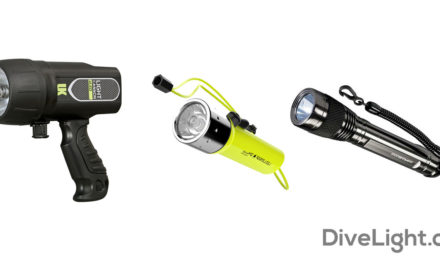Underwater photography can be tricky. It’s difficult to capture the bright and vivid colors of the coral reefs and marine life. This is why having a good dive light as well as a good camera is extremely important. Here we will focus on how a proper dive light can completely change your underwater photography.
When choosing a dive light, there are a few things you have to consider. Think about what kind of places you will be diving, how much you are willing to spend and what features you would like the light to have. It is also important to think about how dark the places you will be diving in are going to be. For example, darker dives need a brighter light.
A dive light’s brightness is measured in lumens, which is a marker for how visible the light is to the human eye. This is different than the traditional “watt” system used for your household light bulbs. While watts measure the energy output, lumens measure the actual brightness of the light.
One great dive light model made for the average diver is Light & Motion’s GoBe+ Video Kit. This photography dive light’s lumen output is around 700, which is a solid mid-range level of brightness, and the kit features both wide (general illuminating power) and spot (direct spotlight) heads, as well as a mount compatible with just about any underwater camera. This kit is advertised to be waterproof up to 120 meters. There are other dive lights that produce up to 6000 lumens, but they aren’t necessary for the average diver, and brighter lights can startle marine life.
When purchasing a dive light, ultimately make sure to find one that has the capacity to illuminate marine life well. Ensuring it meets your other personal needs/desires is important, but without the ability to showcase the incredible creatures found underneath the surface, it’ll be difficult to successfully photograph them. Take into account the lumen output as well as compatibility with your underwater camera and you’ll be set.




